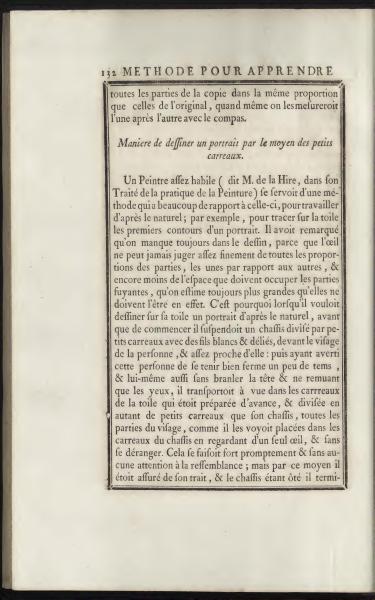Method for Learning
All parts of the copy should be in the same proportion as those of the original, even if measured one after the other with a compass.
Method of Drawing a Portrait Using Small Grids.
A skilled painter (as stated by M. de la Hire, in his Treaty on the Practice of Painting) used a method similar to this for working from nature; for example, to sketch the initial contours of a portrait on canvas. He had noticed that there is always a shortcoming in drawing because the eye can never finely judge all the proportions of the parts in relation to one another, and even less of the space that should be occupied by the fleeting parts, which are always considered larger than they should be. Therefore, when he wanted to draw a portrait from nature on his canvas, he would hang a frame divided by small grids with thin white threads in front of the person's face, and fairly close to it. Then, having instructed the person to remain very still for a while, and himself not moving his head and only his eyes, he transferred by sight all the parts of the face into the grid squares on the canvas that was prepared in advance and divided into as many small squares as his frame, as he saw them placed in the grid squares by looking with one eye, without altering. This was done very quickly without any attention to likeness; but in this way, he was assured of his lines, and once the frame was removed, he completed...
The text describes a method of drawing a portrait using a grid system on canvas. A painter uses a grid frame to proportionally transfer the features of a face onto a canvas. By using this technique, the painter ensures accurate proportions and finishes the portrait without concerning himself with exact likeness initially.
